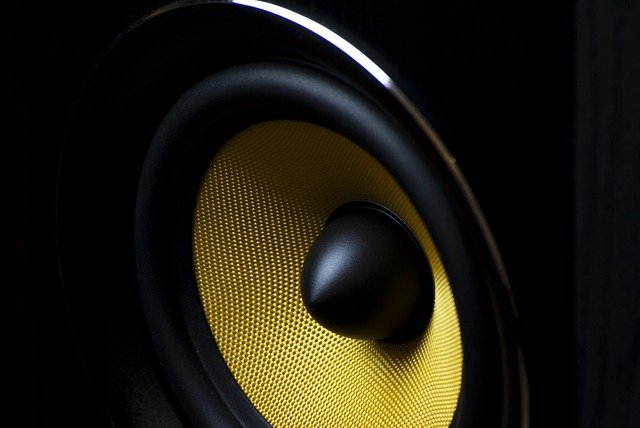Subwoofer Buying Guide – What to Look for
Buying your first subwoofer is like buying your first car—a little scary, a little more money than you were expecting to spend, and suddenly, you feel like a different person. More adult. More responsible. And it feels…good? Well, it does until you drive off the lot and realize you don’t know how to open the gas tank to fill up the car. Subwoofers can feel like that as well. We’ve been there, so we wrote this handy subwoofer buying guide to save you from the pain we’ve all experienced. Knowing what to look for when you shop for a sub removes a lot of stress. Buying the right subwoofer also transforms your listening experience in ways you’ll appreciate for years to come.
A subwoofer is a big box that’s supposed to make this transformational difference in your home theater experience. But how? How do I hook this thing up? Where do I place it? What comes next?
Fear not, dear reader, help is on the way.
Before you even consider buying a subwoofer, you need to identify and few things to separate what you actually NEED from the things the Internet says you must have. This subwoofer buying guide will help you with that. Let’s get started.
Room Size – The Right Subwoofer for Your Room
Room size, more than anything determines the size of the subwoofer you need. We can’t make a subwoofer buying guide without considering the room. Note: This is NOT the size of your home theater area or in any way related to how close or far away you sit from your subwoofer. The room the subwoofer will be in, and any adjacent spaces that can’t be closed off with a door is considered “your room.” The cubic footage of that space will determine what size of sub you need.
The reason is simple: Unlike the direct sound that comes from your speakers, the bass from a subwoofer must fill the entire space before you can adequately perceive it. The smaller the room, the smaller the subwoofer can be and still fill the space. If you have a massive room, you’ll need a massive subwoofer.

Author’s Note: For a quick point of reference, a normal-sized bedroom would be considered a Small room. Double that space for a Medium room. Anything larger than that is considered Large. In most homes, especially with great rooms that open to the kitchen and rest of the home, filling that area with bass would not only be expensive, it would probably be uncomfortable. But if you have a smaller, enclosed space, buying the right sized subwoofer for the area can save you money.
Most manufacturers will have some sort of recommendations based on room size. You can take those with a grain of salt. Manufacturers have a lot to worry about with customers, and one way to make sure a customer is happy is to sell them more subwoofer than they need. Like cars, no one complains if they have more horsepower than they need. You sure will hear about it if their brand new car can’t make it up their driveway without a running start.
Target Performance – Saving Money by Buying the Right Subwoofer
We also really can’t write a subwoofer buying guide without asking “What are you looking for in a subwoofer?” Do you just want to make sure you are hearing the entire frequency response or are you trying to shake the walls with bass? Are you mostly listening to music or are you watching Marvel movies every night? Most music doesn’t go much lower than 30Hz while movies might have notes south of 20Hz. If you don’t need the lowest notes because of how you use your subwoofer, you can save a bunch of money. Buying the right subwoofer takes all this into account.

Please, please don’t read the above as “some subs are good for music and some are good for movies.” That particular old-wives-AV-tale has been floating around the Internet for far too long. A good subwoofer is a good subwoofer. Bass doesn’t care if it originated from a tuba or an explosion. Knowing your target performance lets you save money by not buying a subwoofer with capabilities you’ll never use. To return to the car analogy, you could buy a Ferrari to run a mile up the road to buy groceries every couple of days, but you’d be underutilizing the capabilities of the car.
Setting a Reasonable Subwoofer Budget
You can spend ridiculous amounts of money on this hobby, and subwoofers are no different. The advent of online retailers and frequent sales means that you can get a great subwoofer for not a lot of money. That said, you need to have a realistic expectation of how much you can spend. Most quality subwoofers start at $500 and work their way up from there. While we are going to suggest you always buy two subs, we understand that for many people, that is not possible. Fortunately, many retailers (SVS Sound for example) not only have discounts on two subwoofers, but they will often (in our experience always) honor the discount even if you buy the second sub a year later.

A trap to avoid when subwoofer shopping is to think the subwoofer needs to “match” the speakers. In the case of most other speakers in your system, you want to make sure the timbre (or the quality of the sound) is the same. Not so with subwoofers. Because of the limits of how we hear low bass frequencies, all similarly performing subwoofers sound the same. Now, if you want to match the subwoofer to the speakers for aesthetic reasons, you can. Just know that you could probably get more performance for less money by purchasing another brand of subwoofer.
Finding the Right Subwoofer for Your Room
In the end, you may determine the correct size/performance of subwoofer(s) you need, save up enough money to buy them, and then realize that you have no room for them in your theater area. In that case our subwoofer buying guide would have failed you.
Subwoofers have one law – They can be powerful, small, or cheap. Pick two. A low hitting, inexpensive subwoofer will be large. A small, inexpensive subwoofer will not be able to play very low (or loud). Getting all three is near impossible. It is important when you are making these decisions to be thoughtful of placement. Where can you reasonably place a subwoofer (or two) in your space? How big of a subwoofer will you be willing to look at (or, more importantly, how large of a subwoofer will your partner tolerate)? Subwoofers can take up the space of a small piano and weigh well over 100lbs. That’s why we have one rule around here:
Build a box.

When you think you have the perfect subwoofer for your space, you’ll be tempted to hold up a tape measure and try to envision how big the subwoofer will look in the room. You will be wrong. The only way to really know for sure is to take some of those Amazon boxes out of the recycle bin and tape them together until you have the same proportions as the subwoofer you are looking to buy. Believe us, you will be glad you did.
Subwoofer Buying Guide Conclusion
This subwoofer buying guide isn’t meant to be an exhaustive list of what you need to do to buy a subwoofer. What we intend is for you to use our advice to help you narrow down your choices. We also hope that expectations can also be managed with this article. If you have reasonable expectations of what you’ll get based on what you’ve identified as your needs, you’ll inevitably come out of the experience much happier.


